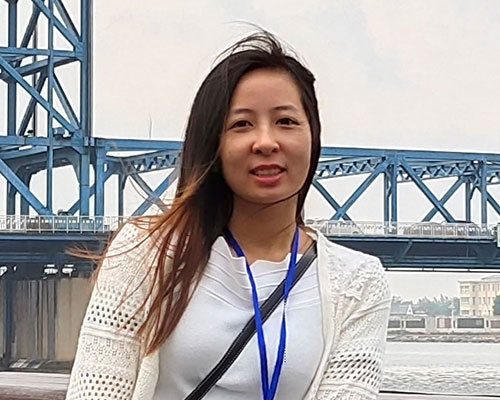language
English
العربية
বাংলাদেশ
Български
Hrvatski
Česky
Dansk
Nederland
 Esperanto
Esperanto
Slovenski
Filipino
Suomi
Français
Maori
 Shqiptare
Shqiptare
Georgian
 Euskara
Euskara
Deutsch
Ελλάδα
ישראל
इंडिया
Magyarország
Ísland
Indonesia
Irlanda
Italia
日本語
Sovensko
Հայաստան
한국
Kyrgyz
ປະເທດລາວ
 Zulu
Zulu
Latvian
Lithuanian
Luxembourgish
 Latinus
Latinus
Macedonian
Малайская
Maltese
Монгол улс
 Cymraeg
Cymraeg
ဗမာ
 தமிழ்
தமிழ்
नेपाल
Norge
ایران
Polska
Portugal
România
Российская
Србија
 Slovak
Slovak
Србија
 Slovak
Slovak
Bosanski
Slovenian
Беларус
España
Sverige
Точик
ประเทศไทย
Türk
Azərbaycan
Uzbek
 Afrikaans
Afrikaans
Việt Nam
What Is a Vertical Transfer Table in the Glass and Ceramic Processing Equipment Industry?
Time:
2023-10-25
Introduction:
A vertical transfer table plays a crucial role in the realm of glass and ceramic processing equipment. This article aims to explore the purpose, functioning, and benefits of vertical transfer tables in the manufacturing and processing industry.
1. Understanding Vertical Transfer Tables:
A vertical transfer table is a specialized machine used in the manufacturing and processing of glass and ceramic materials. It is designed to facilitate the seamless transfer of products or workpieces between different stages of the production line.
2. Functionality and Operation:
Vertical transfer tables are equipped with a sturdy platform capable of vertically moving products or materials. They utilize sophisticated hydraulic or pneumatic systems to lift, lower, and position the workpieces. This enables efficient movement between different processing stations, such as cutting, shaping, polishing, or coating.
3. Enhancing Efficiency and Productivity:
By automating the transfer process, vertical transfer tables significantly improve efficiency and productivity in glass and ceramic processing. These machines eliminate the need for manual handling, minimizing the risk of damage or breakage. Moreover, they ensure precise and consistent positioning of workpieces, reducing errors and enhancing overall quality.
4. Optimizing Workflow:
Vertical transfer tables offer a streamlined workflow by seamlessly integrating with other equipment in the production line. They can be customized to meet specific requirements, accommodating various dimensions and weights of glass or ceramic products. This flexibility allows for smooth and continuous processing, minimizing downtime and maximizing output.
5. Ensuring Operator Safety:
In addition to efficiency gains, vertical transfer tables prioritize operator safety. They are equipped with advanced safety features such as sensors, emergency stop buttons, and safety guarding. These precautions prevent accidents and injuries, creating a secure working environment for operators.
6. Applications in the Glass and Ceramic Industry:
Vertical transfer tables find extensive use in the glass and ceramic industry. They are employed in the production of a wide range of products, including architectural glass, glassware, ceramic tiles, sanitaryware, and decorative items. These machines enable manufacturers to meet the demands of diverse markets efficiently.
Conclusion:
Vertical transfer tables serve as indispensable assets in the glass and ceramic processing equipment industry. Their ability to enhance efficiency, optimize workflow, ensure safety, and provide seamless integration makes them vital components of modern manufacturing processes. By investing in vertical transfer tables, manufacturers can achieve higher productivity and maintain a competitive edge in the market.
A vertical transfer table plays a crucial role in the realm of glass and ceramic processing equipment. This article aims to explore the purpose, functioning, and benefits of vertical transfer tables in the manufacturing and processing industry.
1. Understanding Vertical Transfer Tables:
A vertical transfer table is a specialized machine used in the manufacturing and processing of glass and ceramic materials. It is designed to facilitate the seamless transfer of products or workpieces between different stages of the production line.
2. Functionality and Operation:
Vertical transfer tables are equipped with a sturdy platform capable of vertically moving products or materials. They utilize sophisticated hydraulic or pneumatic systems to lift, lower, and position the workpieces. This enables efficient movement between different processing stations, such as cutting, shaping, polishing, or coating.
3. Enhancing Efficiency and Productivity:
By automating the transfer process, vertical transfer tables significantly improve efficiency and productivity in glass and ceramic processing. These machines eliminate the need for manual handling, minimizing the risk of damage or breakage. Moreover, they ensure precise and consistent positioning of workpieces, reducing errors and enhancing overall quality.
4. Optimizing Workflow:
Vertical transfer tables offer a streamlined workflow by seamlessly integrating with other equipment in the production line. They can be customized to meet specific requirements, accommodating various dimensions and weights of glass or ceramic products. This flexibility allows for smooth and continuous processing, minimizing downtime and maximizing output.
5. Ensuring Operator Safety:
In addition to efficiency gains, vertical transfer tables prioritize operator safety. They are equipped with advanced safety features such as sensors, emergency stop buttons, and safety guarding. These precautions prevent accidents and injuries, creating a secure working environment for operators.
6. Applications in the Glass and Ceramic Industry:
Vertical transfer tables find extensive use in the glass and ceramic industry. They are employed in the production of a wide range of products, including architectural glass, glassware, ceramic tiles, sanitaryware, and decorative items. These machines enable manufacturers to meet the demands of diverse markets efficiently.
Conclusion:
Vertical transfer tables serve as indispensable assets in the glass and ceramic processing equipment industry. Their ability to enhance efficiency, optimize workflow, ensure safety, and provide seamless integration makes them vital components of modern manufacturing processes. By investing in vertical transfer tables, manufacturers can achieve higher productivity and maintain a competitive edge in the market.
Contact Us
Add: No.28 SanFang Road, Lunjiao, Shunde, Foshan, Guangdong, China.
E-mail:info@zhengyi.cc
Chinese:www.zhengyi.cc
English:www.glassmachinery.com
Tel:+86-757-27889799
Manager Rachel Wu:+86 13326780588
(WeChat / WhatsApp)
Rachel Wu

Copyright © 2023 Foshan Shunde Zhengyi Glass Machinery Co.,Ltd.




